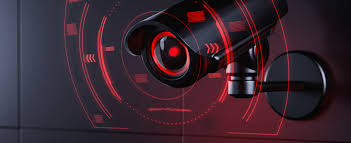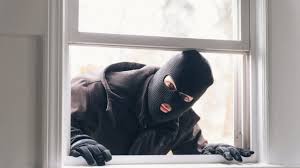With so many affordable security cameras these days, there’s really no excuse not to have some type of security system in place. When choosing the best home security system for you, avoid making these common security mistakes and ensure that you properly safeguard your home and loved ones. Before you start setting up your security system for the first time, let us help you avoid some of the most common surveillance mistakes beginners make.We've compiled a list of a few mistakes people make when they attempt to install security cameras on their own.
Mistake #1 – Cheap Systems or Wrong Home Security Systems
Unfortunately, not all security cameras are equal. While there are many inexpensive cameras and systems that may seem appealing (especially to your wallet), you will likely run into performance issues. When shopping for security cameras, be sure to pay attention to features and specifications. Look into user feedback and reviews to ensure you are making a sound investment. here is how to choose best security camera?
Mistake #2 – Poor Positioning
Just like when you take photos, you need to make sure your wireless security cameras are pointed at the proper angle in order to get the best images. Don’t point the camera at the ground, think about obstructions, and make sure it won’t be exposed to too much light (which causes the images to get washed out). It’s also really important to make sure you put those cameras in an area that has access to a reliable WiFi signal.
“Consumers often make the mistake of placing cameras in a remote location lacking a strong WiFi signal—this translates to choppy video streams and connection issues,” says Carissa Blegen, product content manager. Plan ahead by testing the area. Check WiFi strength using a mobile device or running a WiFi speed test online.”
Blegen says you can also add in a WiFi extender or purchase a camera that has one built in. Of course, you could also move the camera to an area with better coverage.
Mistake #3 – Not Using Enough Cameras to Cover Your Entire Property
Make sure you have enough cameras to scope out the different areas in and outside of the home. Covering your property requires more than just two cameras. Many self-starter kits range from two to four cameras, yet this likely is not enough to give a complete view of your property. If you are using it simply to see when the UPS guy arrives with a package or if your children have come home from school yet or not, the small amount of cameras is fine. However, if you want complete protective coverage you likely need more cameras. An establishing, wide angle lens is perfect for covering more ground, but is not great for identifying faces. Due to this, you’ll need cameras covering the grounds and access points. You can start off with the four camera starter-kit, but identify your blind spots and install additional cameras to cover all your bases. Annke can help with the necessary cameras you need.
Mistake #4 – Passwords
With anything security related, we can’t stress enough how important strong passwords are. Setting up the wireless network for your cameras is the final step of installation. While a wireless network is easier to set up, it also means the feed can be hacked. It is important to set up a password on the attached network. And always, always, ALWAYS change the default password. If someone gains unauthorized access to your surveillance feed, they can study the layout of your system and your daily routines, mapping out the best time to attack.
If you have an internet-connected system, it likely offers remote monitoring, thus you need a password to access it. Again, change your default password as soon as possible, and choose a strong, complex, and long password that you can remember.
Mistake #5 – No night vision.
This may seem obvious but it is astonishing how many readers forget to check for this feature before buying a home security camera. For most purposes, having night vision will be critical to allow your security camera to record proper footage at night. Look for cameras that provide bright and clear night vision. see how to choose a best night vision security camera.
Mistake #6 – Failing to provide enough lighting.
If you require night time monitoring, you should invest in night vision security cameras. However, if your camera does not have night vision, be sure to provide enough lighting so that your cameras can record clear footage. Remember, putting cameras too close to bright lights will cause the picture to be disrupted. Also, if an outdoor camera is pointing to direct sunlight, this will cause stripes in the images.
Mistake #7 – Installing the Cameras Beyond Wireless Range
Most home security cameras are wireless. Wired cameras are great and provide a solid feed, but this installation for home use is not practical. Wireless cameras are far easier to set up, but understanding the camera range is important. Every camera has a set range it can be placed away from the receiver. Once the camera starts to reach the edge of this range, the camera feed may run into errors and even drop entirely. Know your camera range before installation. When purchasing cameras for the CCTV, keep the necessary distance you’ll need in mind. If you have a larger property, going with a longer range wireless camera is a must.
Mistake #7 – Using cameras without Wide Dynamic Range at doorways and windows.
Wide Dynamic Range (WDR) plays a big role when part of an image is extremely dark but another part is bright. Since lighting conditions indoors and outdoors can vary drastically, this feature is especially essentials for cameras near windows and doorways.
Mistake #8 – Ignoring the subscription fee.
Some companies try to sell a cheaper security camera upfront but require you to pay a hefty ongoing subscription fee for otherwise basic features. Always include the subscription fee when evaluating how expensive the security camera is.
Mistake #9 – Not Testing Your Configurations.
It is rare that one home security system is enough for all your home security needs. Whether you have one security camera or 20 different cameras and sensors, you should test all of them to ensure proper configuration and performance. For example, you may not know that your camera is poorly positioned or that your alarm system was not properly activated.
Try simulating a break-in with a friend, family member, or your pet to determine the capabilities of your home security system. Most criminals are seasoned vets so they probably know how to bypass one of more components of your system, thus having more aspects can help to ensure they are stopped.
Please check those list before you using your home security system.
#Repair or replace broken parts of your home security system
#Test the control panel and all other components of your home security system
#Check that signals are sent to and received by the monitoring center
#Professional maintenance ensures that there’s no guesswork in handling, fixing or replacing faulty components of your system.
#Check/change exterior lighting to ensure clearer pictures or videos for your surveillance cameras
#Simulate intrusion to check if motion sensors will detect it or trigger the right alarm
Installing a home surveillance system can be rewarding, providing you a sense of security and peace of mind. However, the process of choosing, installing and using the right cameras is a delicate task. It’s important to evaluate your needs, understand what features will help you accomplish your goals, and execute installation and use correctly. Avoid errors in the process by reviewing these common security camera mistakes.




Leave a comment
This site is protected by hCaptcha and the hCaptcha Privacy Policy and Terms of Service apply.